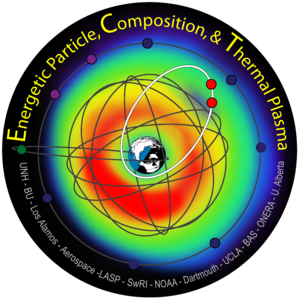Data Quality and Caveats
We recommend and request that you contact the ECT team early in your studies so that we can help assess if there are any data issues that might affect the results of your analysis. This page has a list of some known issues but it is necessarily brief and incomplete.
Contact Harlan Spence, Geoff Reeves
The most current MagEIS data is Release 4
MagEIS - data release 4 (rel04) notes (contact: Seth Claudepierre, seth@aero.org)
Please see this document for a more detailed description of the following points.
Major Updates Between rel03 and rel04:
A. Considerable issues with the MagEIS proton measurements have been uncovered, including noise at the lower energies (~60-250 keV) and efficiency-of-detection issues at the higher energies (~250-1200 keV). These issues began in mid-2013. After that time, the MagEIS proton data should only be used qualitatively and with extreme care. We recommend using RBSPICE protons instead.
B. Electron and proton energy channels are no longer time varying in a given daily file. This is likely to break your data analysis and processing codes.
C. Revised flux conversions and calibration factors for electrons. The electron energy channel definitions and flux levels have changed.
D. Revisions to the background correction algorithm for the electron data.
E. The electron and proton time tags should be more uniform in the merged/public L2 and L3 data files than was the case in the rel03 files.
Data Caveats:
- Data quality issues before January 2013. MagEIS electron data prior to 2012/12/21 should be used with an abundance of caution and only qualitatively.
- Detectors 0 and 1 (aka "pixels") on the six LOW/MED units (LOW-A,B; M35-A,B; M75-A,B) are known to be noisy and do not produce valid electron data.
- Detector 0 failed on MagEIS-HIGH-A on 2013/10/03. It measures ~1 MeV electrons.
- Background contamination in both MagEIS electrons and protons, due to inner zone protons and bremsstrahlung x-rays. We can correct for contamination in the MagEIS electron measurements. We cannot correct for contamination in the MagEIS proton measurements.
- There is light contamination in the MagEIS proton telescopes, when they view the sunlit Earth. This is corrected for in the level 3 data but not in the level 2 data.
- The MagEIS proton telescopes have noise in the low energy channels on both spacecraft, likely due to ion implant damage. The noise began around March 2013 and gets progressively worse as the mission progresses and also moves into higher energy channels. There is also a related detection of efficiency issue in the higher energy channels.
- Major changes in electron instrument settings/performance in July-August 2013. Revised energy channel definitions and flux conversion factors, based on GEANT4 simulations and bow-tie analyses.
- MagEIS energy channels and pitch-angle bins are time-varying. Such changes were more frequent early in the mission and the energy channels have been stable since August 2013. Please see this document for a detailed history of energy channel values.
- MagEIS electron data that suffer from thermal oscillations have been removed and set to fill. This has occurred in several intervals during the mission and is due to improper functioning of the thermal control system.
- When the fluxes are low, counting statistics can produce significant errors and uncertainties.
- For a few reasons throughout the mission, some MagEIS spectrometers were operated in the "Bias Off" configuration for varying periods of time. With the bias is off, the data are not valid.
- The L2 and L3 files contain a data quality flags that the user should consult.
The most current HOPE and REPT data are Release 3
Known issues:
Release 3 (rel03) of the RBSP-ECT data contains known problems and 'issues' that could affect the scientific analysis of the data. In the coming weeks we will be documenting the ones that it is most important to be aware of. For example:
Here is a partial list of known issues for each instrument. The instrument names link to more detail about these data issues.
- Some adjustments for electron flux conversion factors in lowest ~2 channels have occurred at various intervals
- When signal to background gets low the spectrum appears to "flatten out". This primarily occurs in the highest electron chanels. Background appears to be more than just galactic cosmic rays.
- Energy thresholds have been changed in the detector logic at various times. This primarily affects inner zone populations.
- One proton channel (~60 MeV) appears to have anomalously high fluxes
- Frequent periods when counting rates are near 1-count level. When the fluxes are low, counting statistics can produce significant errors and uncertainties.
- Operational changes in January for energies and time-of-flight tables
- Feature of pre-September 5/6, 2013 data where flux binning is messy
- HOPE uses highly time-dependent, multi-mode operations (e.g., Burst support mode) and hence the data sets can be complicated
- Low energy correction for spacecraft velocity not yet corrected
- Different energy tables and modes for apogee versus perigee
- No spacecraft potential flags or corrections (can be significant)
Older Documentation for Previous
(out of date) releases
MagEIS Release 3 Documentation
ECT Data Release 2
ECT Data Release 1







